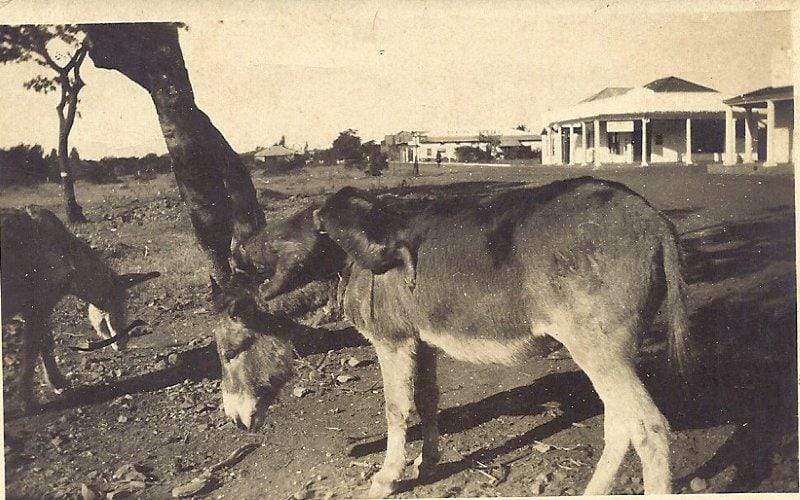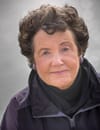Jacks of All Trades

Que Que’s First Street, 1930. (Notice the baboon on the donkey’s back)
Jacks of All Trades
When Gervas Hughes arrived back in Que Que in 1928 there was still no electric power for Que Que, but the G&P Mine supplied water from their pipeline, originating from the small cement weir above Sebakwe Poort. When the drought came there was not enough water so bore holes were put down in the vlei near Amaveni, along with some type of water-softening plant. On the same site was a native cemetery. Mr Edgar Smallman, being the town engineer, besides other things, managed the pumps. He said, “The graveyard gives the water body”.
Jacks of All Trades
Not much had changed in Gervas’ eighteen month absence. Que Que was still a shanty ming town. The only well built brick buildings were the Que Que Stores, near the G&P Mine and the Que Que Hotel, towards the railway and Campbell’s buildings half way between. Opposite Campbell’s were two small shacks on the sanitary lane; one occupied by a plumber, who made rain water tanks and the other housed the Native Department. The poor clerks had a hard life; in additon to the plumber hammering, they had a small workers mine under them. He had mined very close to the grass roots. When he blasted, the clerks covered their tables and waited in the street as white paint flaked off the ceiling.
Jimmy Lowe, was digging foundations for Vernons flats on Main Street near the Que Que Hotel. Gervas went to see if he could do some transoprt businss for him. He found Jimmy with a puzzled look on his face. Probing through the bottom of a trench with a three meter rod, he exclaimed, “There’s a big hole down there!”
“There’s a mine underneath!” Gervas told him. He never heard how Jimmy solved the problem, but did notice some time later that the foot path had sunk about half a meter. Fortunately the building was alright.
Gervas’ business grew and others did too.
Gervas’ friend, Mr Delacy H. Stowe came from Meikles Umtali. He turned to small mine working, first at Kaka Mine. Later he made money on the BF Mine, the site now occupied by BSA Police Rural Camp. A battler, like most of the locals, he bought Chicago Plots 14 and 15, the area later known as Hillandale. In time he acquired Baldachin’s Iron Agency, sold Chevrolet cars and all types of electrical fittings. Peggy Stocks was his pretty assistant. As his fortunes improved, his first house was built at Hillandale where Capt. Collins later lived, later came Fernleigh. While living there, he was largely responsible for making the old golf course, part of which was on BF claims. He also built a third house in Main Street where the Plaza Bakery is now.
The Italian Mr. Frau, besides owning a car repair shop, owned the block opposite the Phoenix Hotel, now part of Sloman’s store. Another car repairer set up shop about 1925 in a small tin shanty where Barclays Bank is today. Oosthuizen was the mechanic, Sam Baldachin his partner. Baldachin also owned the petrol pumps in the area which later became Smallman’s garage.
Mr Markham operated a small mine between Gervas’ property and the railway lines. Mine-slime spilled onto the tracks. When railway officials objected he said, “Take your railway away, I was here first”. The Railways went to the law. Markham lost. The Village Management, recently elevated from being the Sanitary Board, but still chiefly concerned with sanitary buckets, made a bargain with Markham to abandon the claims. In return he received six town allotments, which ran from Wilson’s Garage, then owned by Matherson, to what was later the north round-a-bout.
Civilization was catching up to Que Que, officials becoming too fussy for Gervas. He moved to his Greenham dairy farm on the Que Que River.
Many Thanks to Tim Hughes of Queensland, Australia for the picture and the excerpts from his unpublished manuscript Matambega and Son written in the 1980’s.
